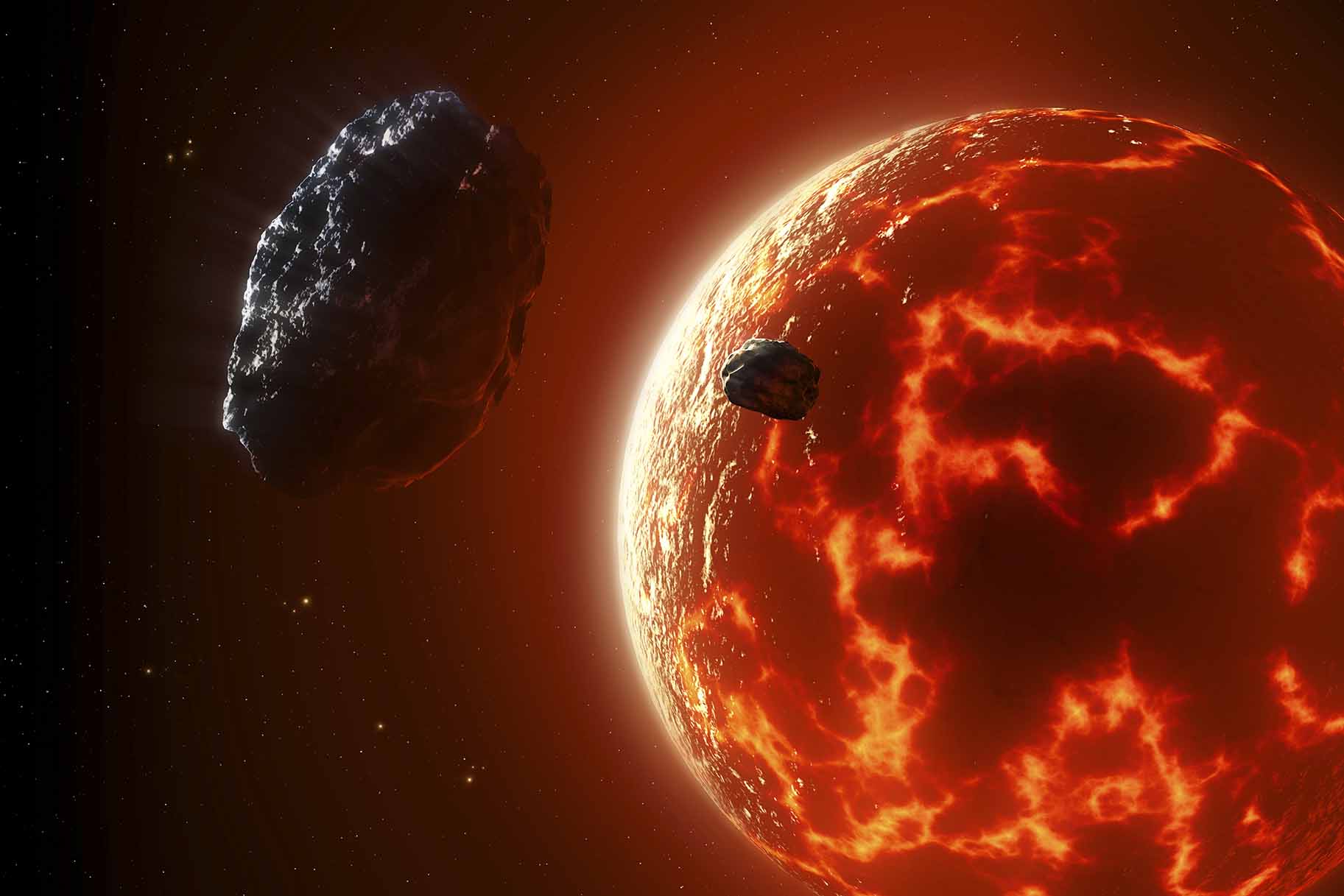Create a free profile to get unlimited access to exclusive videos, sweepstakes, and more!
Astronomers Find a Planet Half-Covered in Lava
If lava monsters exist in space, we just found their homeworld.

Beneath the planet’s crust lies a subterranean ocean of liquid magma and sometimes it bursts to the surface in a violent explosion of molten rock. In case that weren’t bad enough, the 2015 SYFY original Lavalantula (streaming now on Peacock and set in the same universe as Sharknado) features a series of volcanic eruptions which unleash a hoard of giant, fire-breathing spiders. If such a creature does exist anywhere in the cosmos, a better bet is the not-so-distant exoplanet HD 63433 d.
The Exoplanet HD 63433 d Has a Hemisphere of Pure Lava
The recently discovered exoplanet was found using data from the TESS (Transiting Exoplanet Survey Satellite) spacecraft, which was designed to detect exoplanets passing in front of their parent star. Rather than detecting distant worlds directly, TESS worked by measuring the light coming off of a star over time. If a planet passes in front of the star from our point of view, it blocks out some of the light, revealing its presence.
RELATED: TESS is Now Doing Science. Really BIG Science.
Astronomers had previously detected two other planets in the HD 63433 system and used the same data to discover a third. Once they eliminated the signal reduction caused by the two known planets, a smaller dimming signal showed up every 4.2 days as a small Earth-like world whipped around its star at close range. The discovery of HD 63433 d was part of the TESS Hunt for Young and Maturing Exoplanets and was published in The Astronomical Journal.
In many ways, HD 63433 d is a lot like Earth. It’s roughly the same size, with a diameter about 1.1 times that of Earth and its star is quite Sun-like. It’s a G2 star, just like the Sun, and it has a mass roughly 99% that of the Sun. But there’s a reason that HD 63433 is a better home for fire spiders than it would be for us. It’s incredibly young and incredibly close to its star, likely resulting in a hemisphere completely covered over with lava.
RELATED: Exoplanet Lp 791-18 D Is a Volcanic Hellworld
HD 63443 orbits eight times closer to its star than Mercury is to the Sun. Moreover, it’s tidally locked, with one side constantly facing the star. Surface temperatures on the perpetual day side are estimated to reach 1,257 Celsius (2,294 Fahrenheit), well within the temperature range needed to melt surface rock. More research is needed to characterize the night side but we have every reason to believe that at least half of the planet is a hellscape of molten lava.
While it’s not the sort of place we’re likely to visit, HD 63443 d is of considerable interest to astronomers because of what it can teach us about planetary formation. Located only about 70 light-years away, the planet provides a nearby window into what the early days of our own solar system may have been like. The age of the system is estimated at approximately 400 million years, only about 10% the age of our system, giving us a look at what planets look like and how they behave during their adolescence.
See the next best thing to a lava planet in Lavalantula, streaming now on Peacock.



























